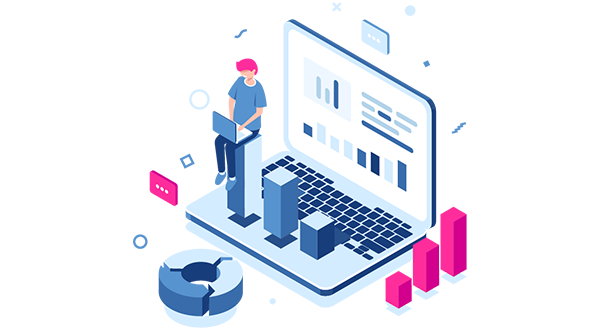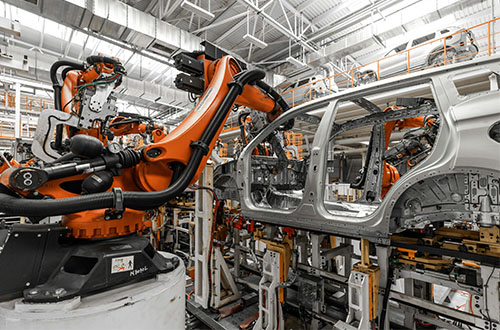

mLogica Thought Leaders: How Outdated Public Sector Infrastructure Fails in High Demand Situations

Anthony Nelson, mLogica V.P., Public Sector, Federal and SLED
Change is the only constant in the organizational landscape, particularly when it comes to technology—the irresistible driver of digital transformation. We see new and advanced technologies constantly pushing the boundaries of what an organization can achieve.
Still, a lot of private and public sector organizations balk at modernizing their aging technologies, despite their high costs, lack of adaptability and scalability, and the scarcity of staff trained to support them. Unfortunately, this inertia, and misplaced loyalty to outdated systems, results in organizations that are hamstrung by high operational costs and oblivious to the increasing vulnerability of their technology, risking both their reputations and their bottom line.
This Impact of Stagnating Technology on the Public Sector
The public sector is particularly hurt by obsolete technologies that block agility and cost efficiencies, two top goals of government agencies. A 2023 report by the U.S. General Accounting Office (GAO) sounds the alarm for federal agencies: “Each year, the federal government spends more than $100 billion on IT and cyber-related investments. Of this amount, agencies have typically reported spending about 80 percent on operations and maintenance of existing IT, including legacy systems.”
They note, “[S]everal of the legacy systems were operating with known security vulnerabilities and unsupported hardware and software.” But what types of technology are these billions in public funds supporting? The report goes on to say:
“In May 2016, GAO reported instances where agencies had systems with components that were at least 50 years old or vendors that were no longer providing support for hardware or software. Similarly, in June 2019, GAO reported that several of the federal government's most critical legacy systems used outdated languages, had unsupported hardware and software, and were operating with known security vulnerabilities.”
Yet the report reveals that most of the agencies identified by GAO as having outdated technology stacks “either did not have documented plans for modernizing their systems or had incomplete plans.
GAO continues, “Agency plans were incomplete if they were missing any of the key elements: (1) milestones to complete the modernization, (2) a description of the work necessary to modernize the legacy system, and (3) details regarding the disposition of the legacy system.”
mLogica Solutions Drive Accuracy, Time- and Cost-Savings
mLogica’s GenAI-powered STAR*M Distributed Workload Modernization and LIBER*M Mainframe Modernization Suite solutions automate both the highly complex process of assessing the source system and the conversion of legacy code and applications—dramatically cutting both planning and execution timelines. By delivering a granular itemization and assessment of every technology in an agency’s decades-old system, including all interdependencies, modernizations can be completed faster, more accurately and with no project-delaying surprises.
U.S. States and Municipalities Fare No Better
A 2024 National League of Cities article outlines the risks when the projected $144 billion earmarked by states and local governments for information technology is disproportionately allotted to propping up outdated systems, including:
- Growing technical debt
- The aging public sector technology workforce
- Deficient or nonexistent disaster recovery and cybersecurity, including ransomware defense
- Siloed data and an inherent lack of system interoperability that wastes vital time and resources
- Lack of vendor support for aging platforms, databases and more
Many of us clearly remember the failures of state agencies during the 2020 pandemic, when overnight spikes in demand led to system failures and severe public hardships. CalMatters points out that in California, “5 million Californians saw unemployment payments delayed during the pandemic, and at least 1 million saw benefits improperly denied. A backlog of unprocessed claims peaked at around 1.6 million.”
With worldwide digital transformation gaining momentum, legacy and mainframe modernization is no longer an exception but a necessity for public organizations that need to enhance service delivery, improve cost efficiencies and build highly responsive government functions. Legacy applications and databases are the primary culprits that stall service delivery and inhibit progress. So how exactly does outdated technology infrastructure fail in high-demand situations?
Performance Bottlenecks
Due to its processing limitations, legacy technology is particularly vulnerable to failure under heavy workloads. The result is high latency and resulting sluggish performance that can quickly overwhelm systems. These recurring problems snowball as the organization continues to grow, leading to escalating operational hurdles and maintenance costs.
Lack of Scalability
End-of-life technologies lack the flexibility to accommodate inevitable fluctuations in workload. This rigidity in legacy infrastructure restricts an organization's ability to scale its business, particularly during unexpected demand spikes, leading to frustrating system slowdowns and crashes. This lack of dynamic scalability becomes increasingly problematic for organizations trying to expand—to serve growing populations, meet evolving client needs or to comply with new regulatory mandates.
Security Vulnerabilities
As the scope and severity of cybercrime grows, regulators have become increasingly stringent regarding how organizations handle confidential agency and public information. Since legacy applications and databases cannot easily integrate advanced security features, they’re inherently unsuitable for safeguarding sensitive data.
Moreover, decades-old systems are often riddled with unpatched security vulnerabilities, creating myriad opportunities for cybercriminals. This is especially true of organizations operating in highly regulated industries, including healthcare, finance and especially the public sector, which touches on all these areas and more.
Data Security and Compliance Challenges
The explosion of IoT (the internet of things), i.e., internet-connected devices, has resulted in a vast network of mechanisms, across a wide range of technologies, interoperating in virtually all environments. This hugely expanded attack surface exposes organizations to a similarly widening threat landscape.
As enterprises integrate more devices, the risk of data theft and misuse of information becomes increasingly critical. Since antiquated public systems are inherently incompatible with a security ecosystem that relies on advanced technologies, legacy-dependent organizations struggle to meet compliance requirements, while insufficient security increases their liabilities.
Lack of Resilience
Aging technology infrastructure is like an old building that becomes increasingly fragile and expensive to maintain. When a frail building faces a storm, it’s likely to collapse. Similarly, decades-old systems lack the ability to recover from major disruptions; a single cyberattack or major outage can expose the organization to irreparable financial and reputational loss.
This highlights the importance of modern cloud-based infrastructure designed to withstand unforeseen disruptions. Highly resilient solutions like CockroachDB, a geographically distributed SQL database system, is a good example of a fault-tolerant database that can withstand evolving threats while operating on any cloud platform.
Inflexibility
Technology integration poses another major hurdle for aging IT infrastructure. Legacy systems, such as mainframe-based applications and databases, are closed, siloed and architecturally incompatible with modern platforms. Legacy infrastructure's inherent rigidity therefore creates a roadblock for organizations seeking to integrate new technologies, including cloud platforms, big data analytics, IoT and more.
Limited Computing Resources
Organizations running legacy technologies constantly grapple with resource shortages. Running data-heavy applications and databases on outdated technology, they overload their systems and struggle to keep pace with increasing business demands, leading to frustrating bottlenecks, extended downtimes and increased security vulnerabilities.
These issue becomes even more critical during peak demand, when agencies require greater processing power and increased storage capacity to handle massive datasets. The constant struggle for resources presented by outdated systems ultimately hampers business agility and can even halt operations entirely.
The Future’s at Stake
Technology is the ultimate differentiator, shaping—or limiting—how both private and public sector entities meet industry standards and evolving client expectations. Therefore more organizations are prioritizing digital transformation, since their tech stack directly impacts not just their current effectiveness but their future viability.
The inability to integrate vital new technologies impedes growth, leaving private sector organizations vulnerable to better-equipped competitors, while public sector agencies risk letting their client bases down in critical moments, plus the embarrassing public repercussions that follow. By moving forward with digital transformation of legacy systems and mainframe modernization, companies can avoid these pitfalls and unlock a future of agility, innovation and greater service offerings.
Conclusion
Outdated technologies collapse under pressure, causing system crashes, security vulnerabilities and cost inefficiencies. By not just modernizing aging systems, but re-thinking the possibilities of technology, leadership can guide organizations into an era of ongoing digital transformation, creating a foundation for success and innovation now and into the future.








































